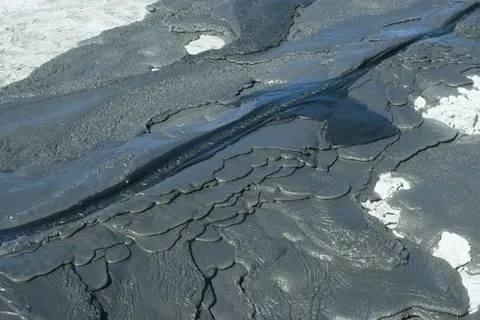What is a carbonatite in geology ?
Carbonatite : definition
Carbonatites, very rare rocks appear most often in the form of small intrusive massifs with annular structures, associated with ultrabasic rocks (peridotites, kimberlites) or in the heart of hyperalcaline massifs (nepheline syenites, ijolites). These very particular rocks are formed from a magma rich in CO2 and calcium directly extracted from the mantle. On contact, they develop a zone of metasomatic alteration coupled with a particular contact metamorphism giving rise to very original rocks : the fenites.
Carbonatites spring exceptionally from certain volcanoes such as Ol Doinyo Lengai, in the rift Valley of Tanzania. Blacker than ink, fluid like water and at a relatively cold temperature (500-600°C) at the exit of the volcano, the carbonatitic magma quickly whitens as it cools (see photo).

